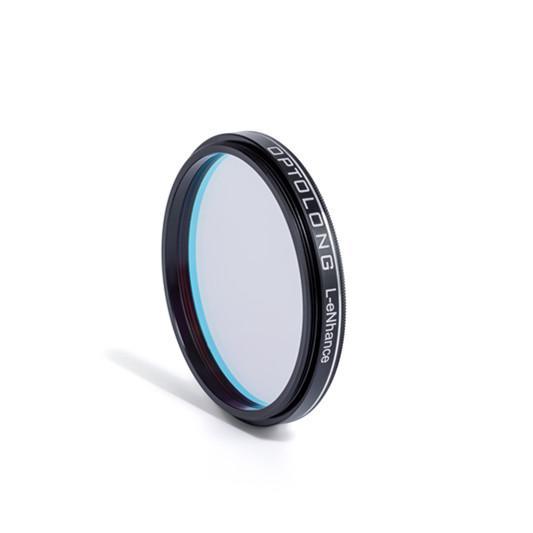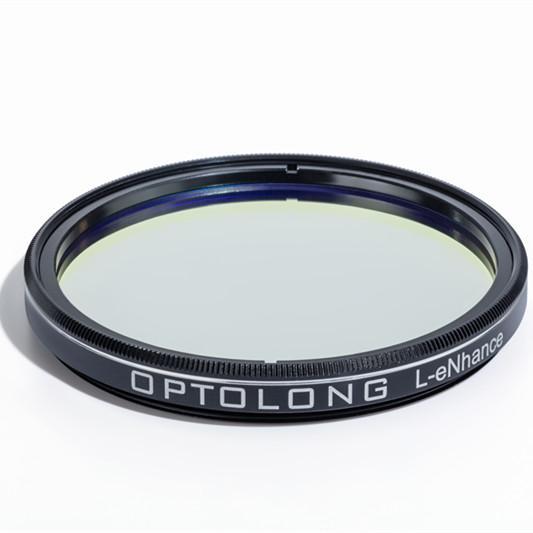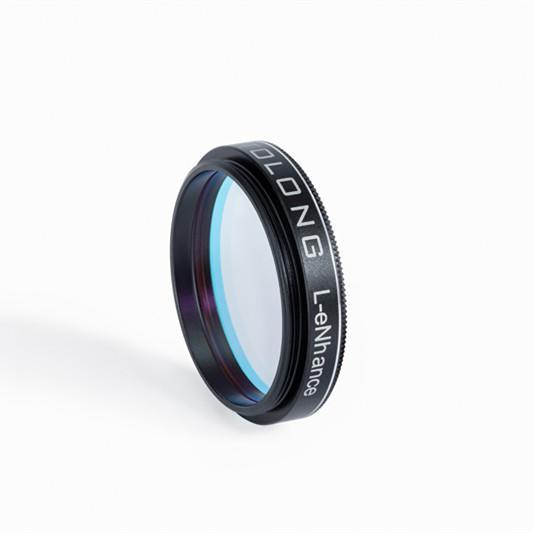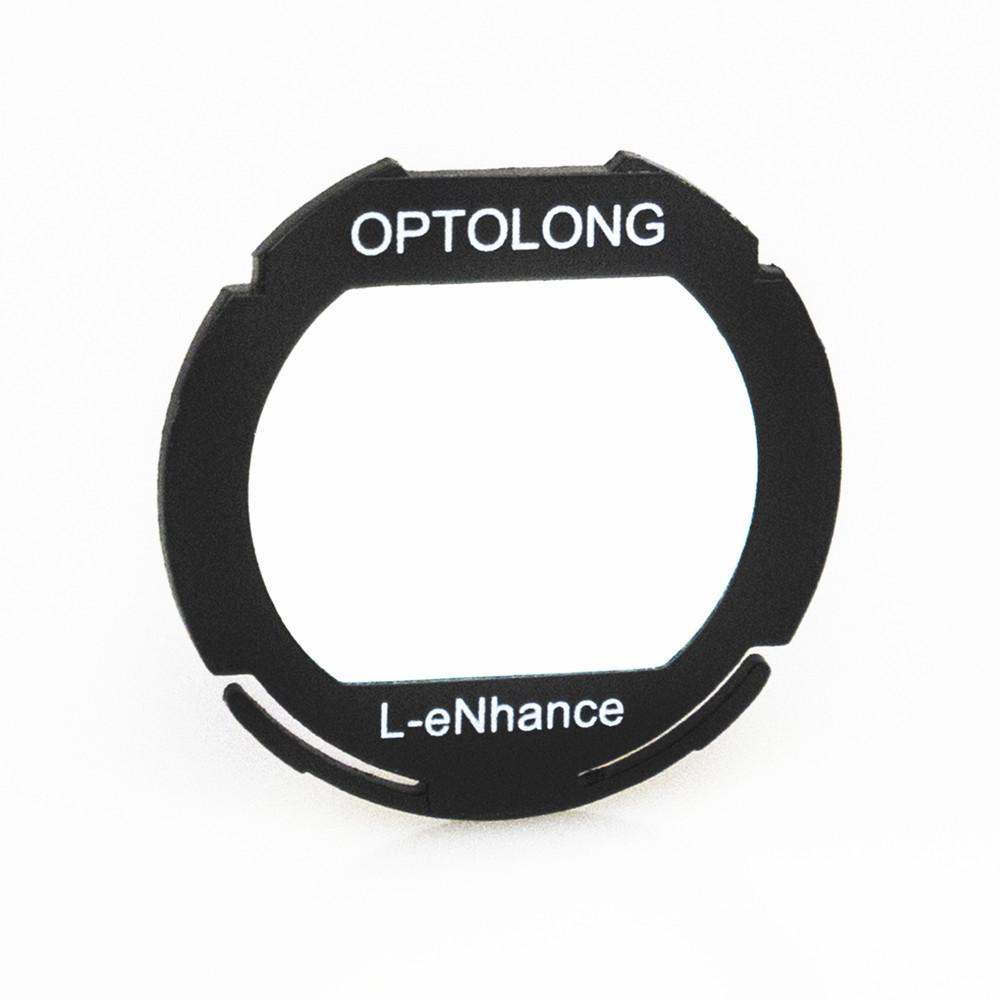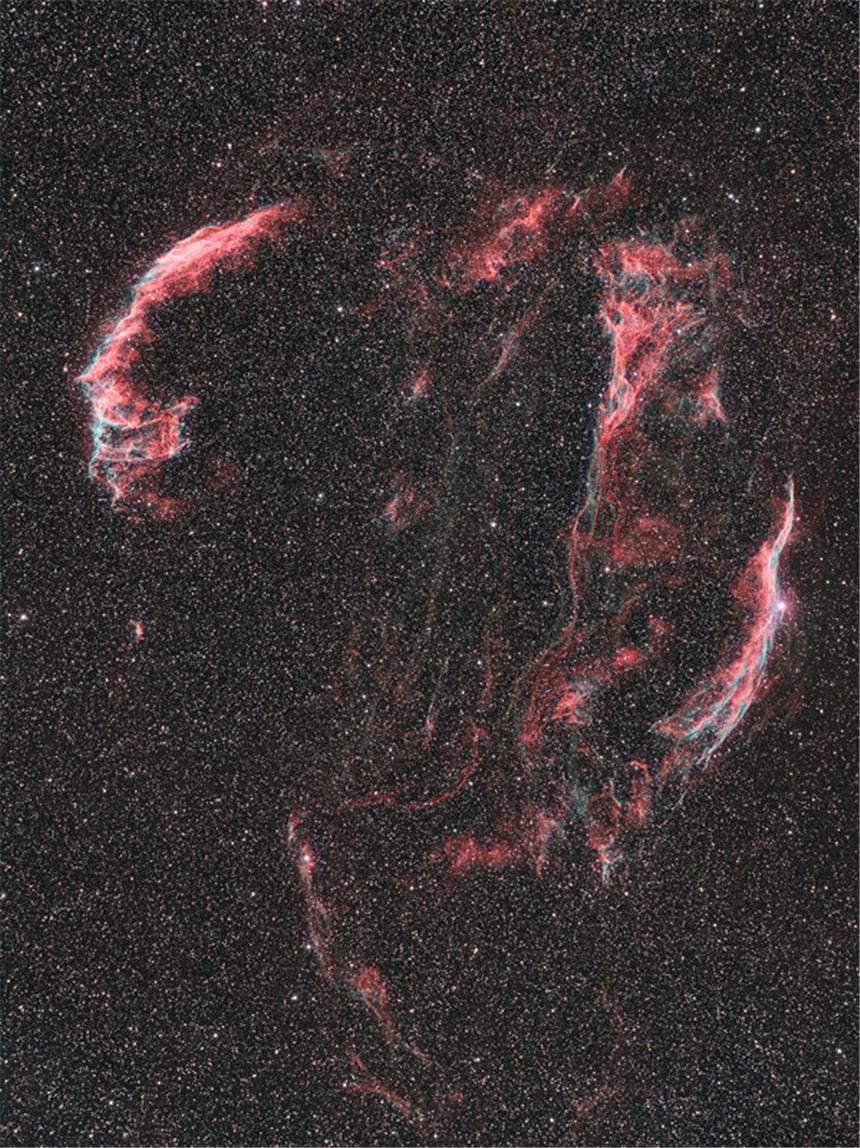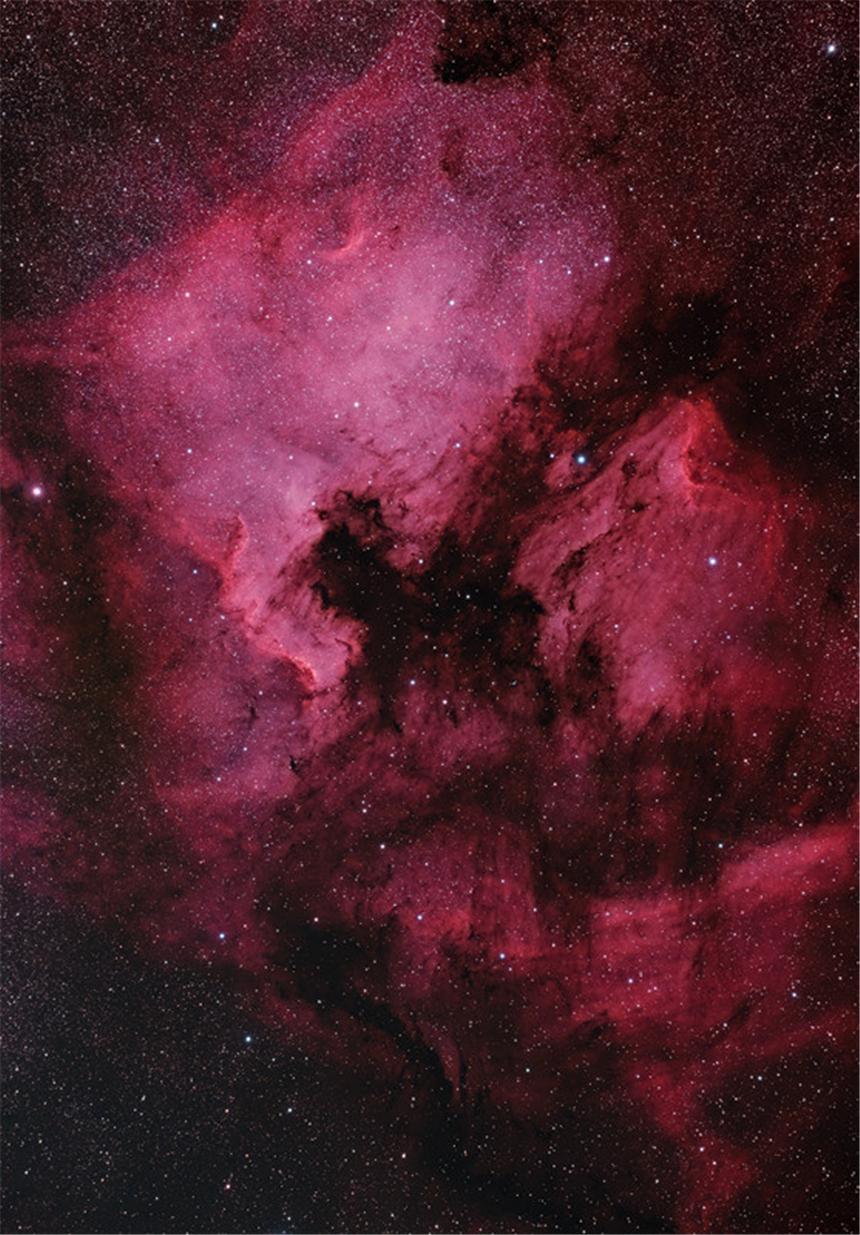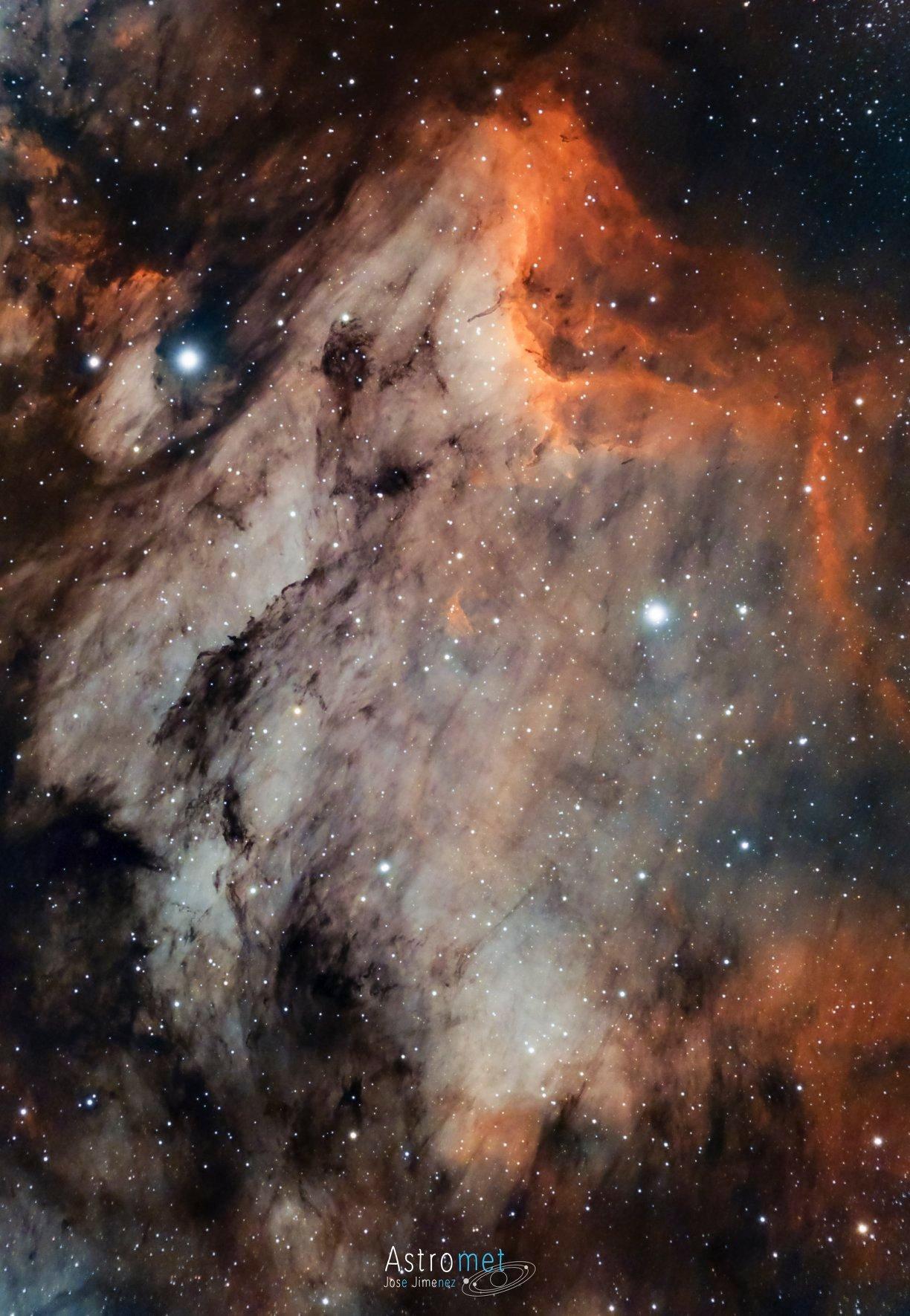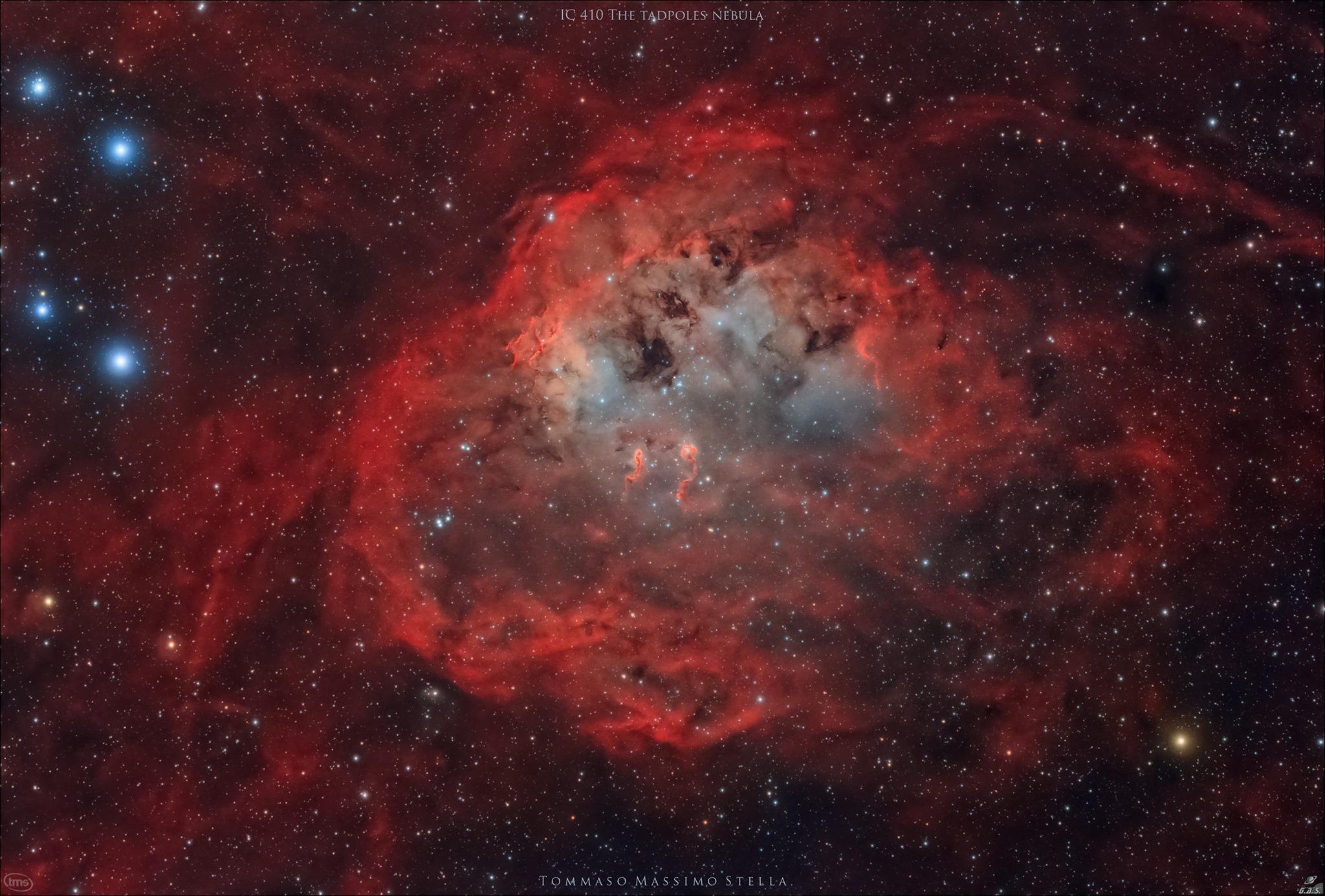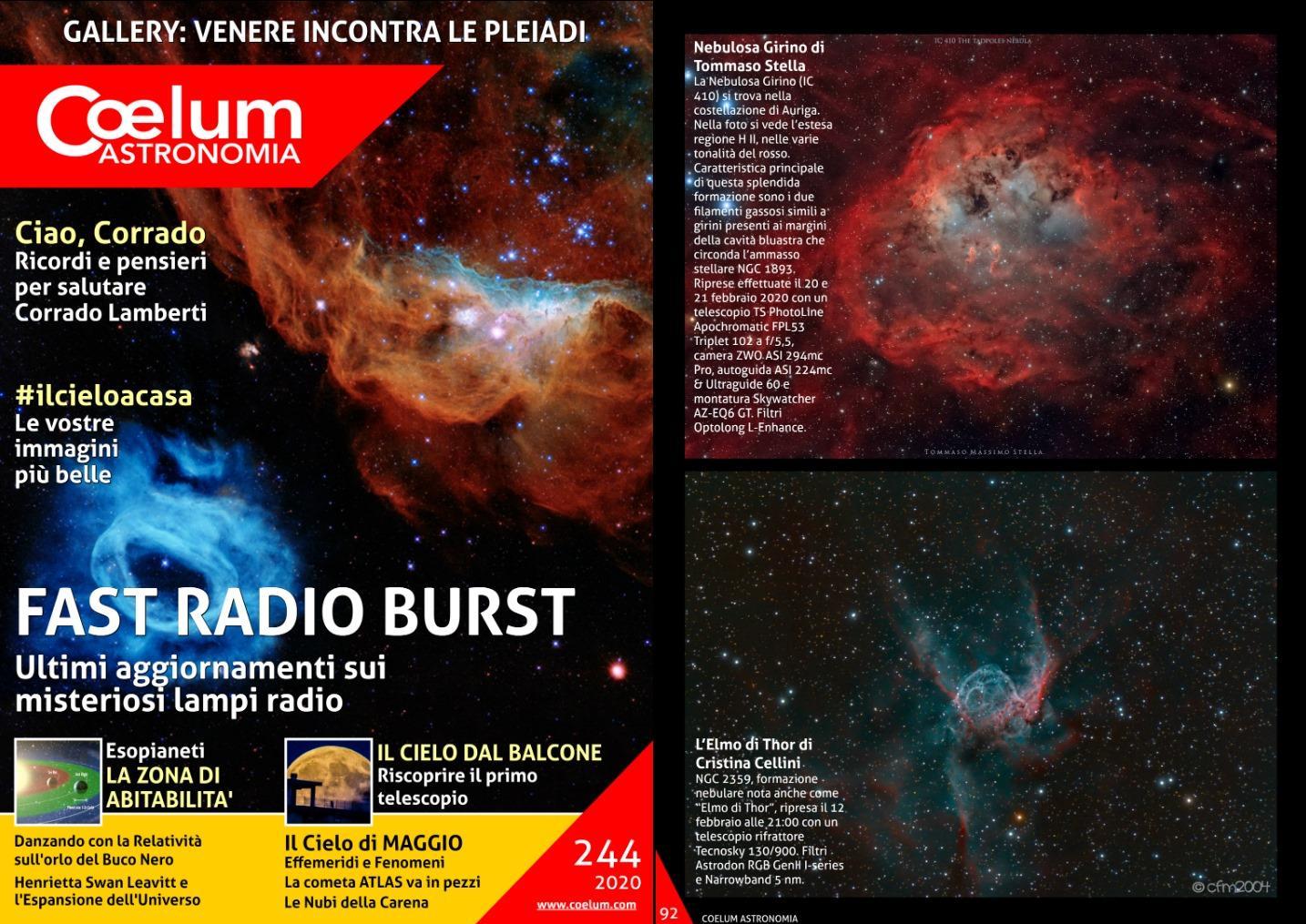-
Description
-
Specification
1. L-eNhance Introduction
The relentless spread or urbanization and its associated light pollution have become a growing problem for all amateur astro photographers. The current solutions to the problem can be expensive and might include the purchase of a monochrome camera, several types of narrowband filters and a filter wheel.
Optolong L-eNhance provides an economical and practical solution for amateurs. It is a dual-band pass filter which has been designed for DSLR (digital SLR), color CMOS and monochrome CCD cameras. The convenience and cost effectiveness of this filter allows amateurs to image a rich selection of astronomical images, even in bright, heavily light-polluted areas. Optolong believes the design of our L-eNhance filter is a technical innovation among filters. It effectively isolates the H-Alpha, H-Beta, and Oxygen III nebula emission lines and achieves a maximum transmission of up to 90%. The performance of this filter delivers images that superbly control the impact from light polluted skies.
Hydrogen is the largest, the most primitive, the simplest, and the oldest element in the universe. Scientists consider that Hydrogen amounts to more than 90% of visible substance in space. Our sun is 5 billion years old, but so far hydrogen is still the key matter of nuclear fusion. While the sulfur element does not have much scientific significance, so keeping H and O is meaning for exploration of life.
Therefore, we highlight H-a, H-b, O3 and O2, and reduce the signal of sulfur.
2.Spectrum and Characteristic
Sbustrate: B270
Thickness: 1.85mm
Tpeak: T>90%
Blocking range: 300-1000nm
Blcoking depth: light pollution line blocking >99%
Surface quality: 60/40
Transmitted Wavefront RMS: λ/4
Parallelism: 30s
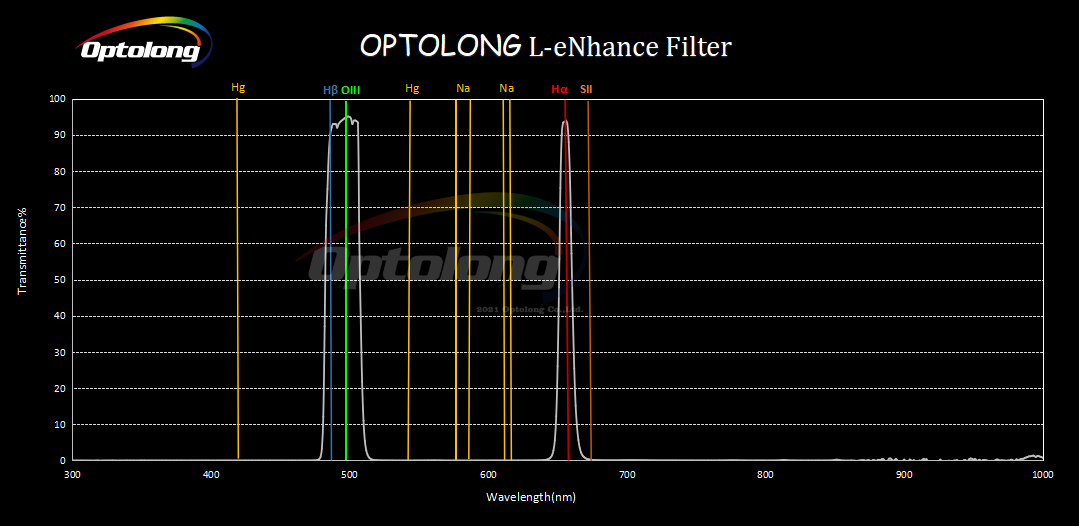
※This curve is only for reference, and is not used as the final product data.
How to read the chart?
▲The horizontal axis is the Wavelength in Nanometers(nm).
▲The vertical axis is transmission in %.
▲The WHITE line shows the transmission of the filter. THe artificial lines are shown in YELLOW. H-Beta line is shown in BLUE, OIII line is shown in GREEN, and H-Alpha line is shown in RED.

3. Coating Technology
·Multi-layers anti-reflection coating
·Non-cementing optical substrate coating
·Optolong L-Pro filter adopts precision coating based on Ion-assisted deposition coating technology for durability and resistance to scratching, as well as stability on CWL(central wavelength) no deviation affected by temperature change.
·Planetary rotation system offers precision and homogeneity of coatings ensuring high value on transmission of pass-band and Optical density of off-band.
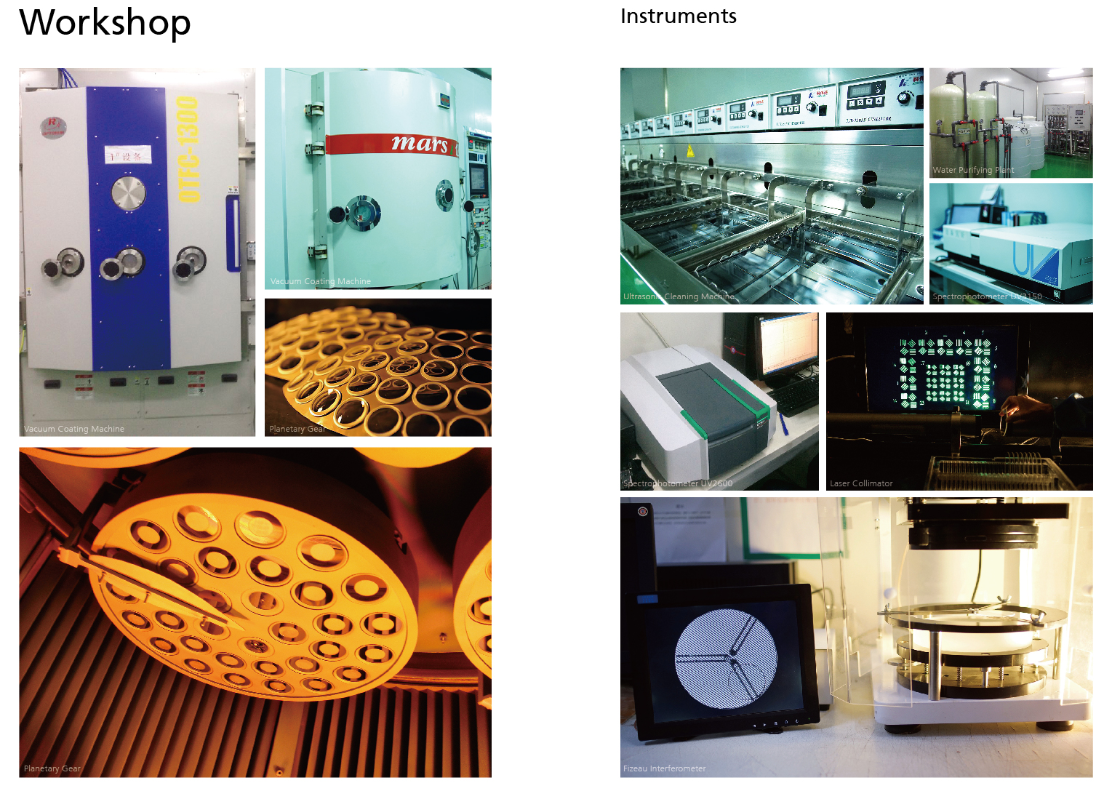
4. Gloable Price
| L-eNhance Gloable MAP | Unit Price in USD dollars |
| 1.25" mounted | $179.00 |
| 2" mounted | $229.00 |
| EOS-C | $259.00 |
5.Package

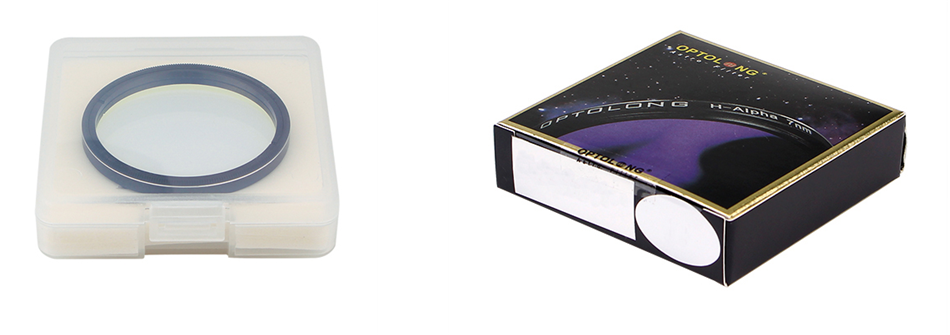
2019 NEW package
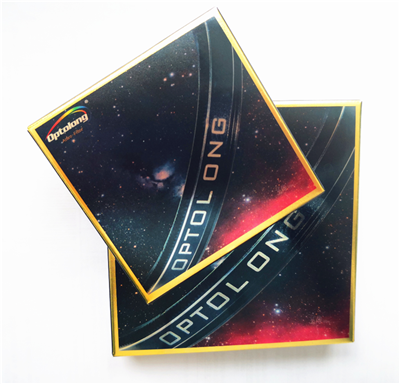
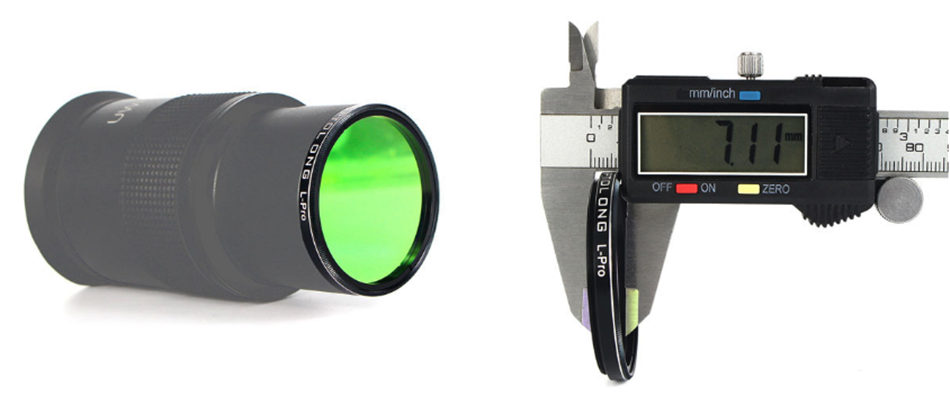
6. L-eNhance Performance
I.Compare: L-eNhance VS no filter © Vincent Cheng
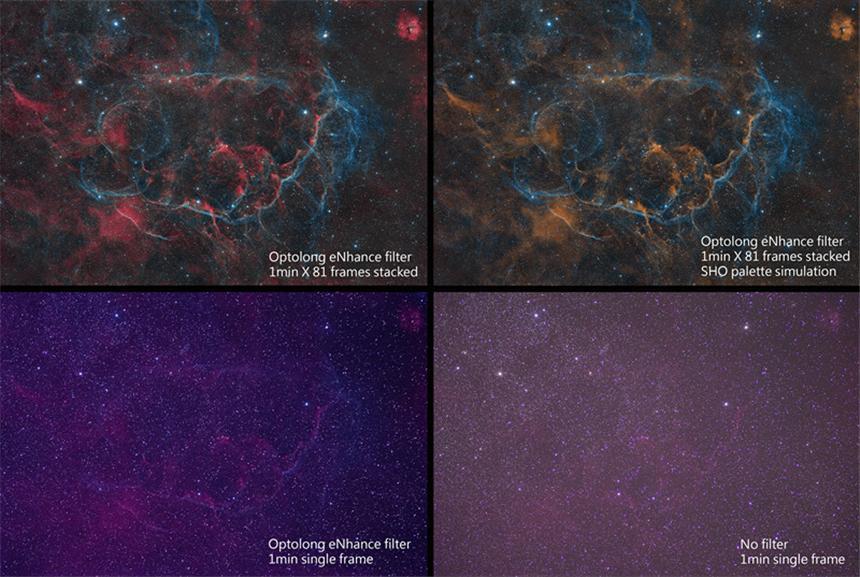
II. Veil Nebula Wide Field (Equipment Test) ©Ron Brecher
This is the first-light test for two new pieces of equipment: QHY367C one-shot colour camera, and Optolong L-eNhance narrowband filter for colour cameras. The huge sensor on this camera, coupled with the Tak FSQ-106, captures the whole Veil Nebula with room to spare. The L-eNhance filter did a great job under difficult conditions – this image was taken under a nearly-full Moon. I think it would do even better in a darker sky. I am also having an excellent experience using Eagle 3 Pro computer which is now being used to control everything: two imaging cameras, an autoguider/planetary camera, two focusers and two dew heater strips.
III. North America Nebula Region©Ron Brecher
Please enjoy this image of the North America Nebula region. I continue to be impressed by both the Optolong L-eNhance filter and the QHY367C one-shot colour camera for this type of target.
The North America Nebula (NGC 7000) dominates the upper left of this image, and the Pelican Nebula (NGC 5070) is to the right centre. Additional, related nebulosity fills the bottom third of the image. These clouds of gas are part of a huge complex of emission nebulae lying about 1,600 light years away in northern Cygnus.
In theory NGC 7000 is bright enough to see with the naked eye, but its light is very spread out making it a challenge. I have seen it with my naked eye and with low power binoculars in dark skies north of where I live. It looks like a faintly hazy, irregular patch of grey.
Everyone sees things differently in these richly textured nebulae. To me the Pelican looks like a pterodactyl. Just yesterday, my wife Gail pointed out a dragon face that I will see from now on: Look in the dark rift between the Pelican’s eye and the east coast of North America. You’ll see a small round, pink nose with two bright eyes looking out at you as if from within a dark cave.
The image below was shot with a one-shot colour camera, but I have also imaged this object in greyscale through an H-alpha filter.
Tekkies:
Takahashi FSQ-106 ED IV @ f/3.6,
QHY367C one-shot colour camera, and Optolong L-eNhance narrowband filter,
Paramount MX, unguided.
Acquisition, and focusing with TheSkyX.
Focus with Optec DirectSync focus motor and controller.
Automation with CCDCommander. Equipment control with Eagle 3 Pro computer. All pre-processing and processing in PixInsight.
Acquired from my SkyShed in Guelph.
Waning crescent Moon, average to above average transparency and fair to average seeing.
Data acquired July 22-26, 2019.
88x10m with Optolong L-eNhance filter (Total = 14hr40m)
Image scale 2.59 arcsec per pixel
Ⅳ.IC1805©Andrea Andreotto Maggi
Result of the latest dual setup adjustments RGB Camera 071 ZWO Nikon Lens 300mm
Filter Optolong L-eNhance
Filter L-Pro Optolong 45 Light 900 sec Ha Camera 1600 M ZWO Astronomy Cameras Telescope 70mm f5 Filter HA Optolong 18 Light 900 sec
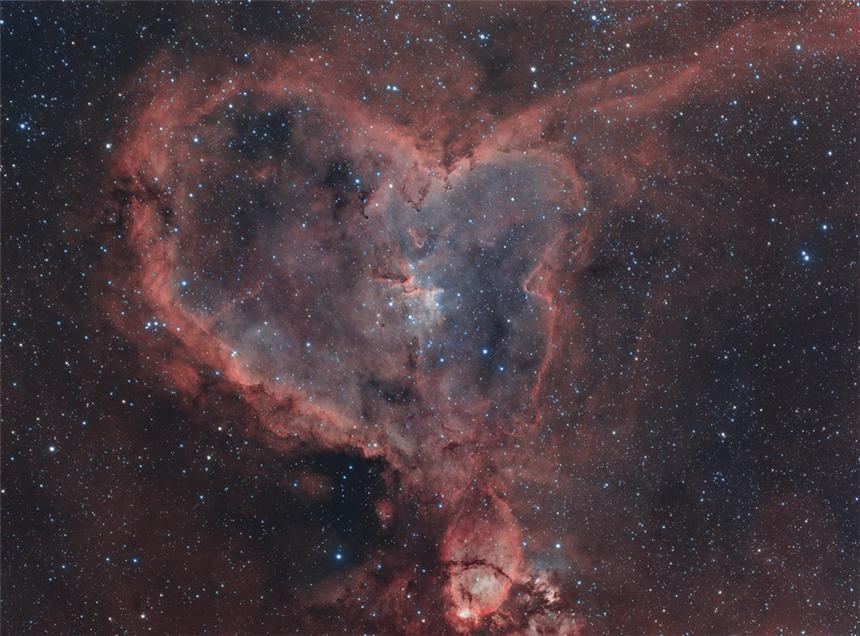
V. IC 5070 and IC 5067 - The Pelican Nebula © José Jiménez
IC 5070 and IC 5067 - The Pelican Nebula
Albanyà - Girona
International Dark-Sky
ZWO ASI183MC PRO & Askar FRA400mm & Optolong Filters
12 x 900" Optolong L-eNhance
12 x 900" Optolong SII
Gain 150 Temp -17
Sky Watcher EQ6 Mount
Guide camera ZWO ASI 120MM
Calibrated, stacked and processed with Pixinsight, and final tweaks with Lightroom
https://flic.kr/p/2jya9kn
Sharpstar Optics
Optolong Astronomy Filter
Ⅵ. The Tadpole Nebula (IC 410) © Tommaso Massimo Stella
The Tadpole Nebula (IC 410) can be identified in the southern part of the constellation of Auriga through the observation of the open star cluster (NGC 1893) around which the extensive region H II is visible in the image in various shades of red.
The main feature of this splendid formation are the two tadpole-like gas filaments that we can admire on the edge of
the bluish cavity that surrounds the star cluster.
Their extension is calculated in about 10 light years while the distance of the whole complex from our system solar is about 12400 light years.
Shooting taken on February 20th and 21th 2020 in Maruggio (TARANTO-Italy) 10m a.s.l.
Technical data
Lights: 98x300s @ 250 Gain (-15°C), 51 Dark, 42 Flat
Telescope: TS PhotoLine Apochromatic FPL53 Triplet 102 @ f/5.53
Camera: ZWO ASI 294mc Pro
Mount: Skywatcher AZ-EQ6 GT
Autoguide: ASI 224mc & Ultraguide 60
Filters: Optolong L-Enhance
Processing: DeepSkyStacker, Photoshop CC, PixInsight, AstraImage Plus
Ⅶ. NGC2264 © Tommaso Massimo Stella
NGC 2264 is a star formation complex which includes the open cluster "Christmas tree" and the "Cone" nebula
(on the left in the image). It is located in the Monoceros constellation about 2700 light years from our solar system and can be observed with the naked eye or with good binoculars.
Near the S-Monocerotis system (the bright star in the center of the image) we find the "Fox Fur Nebula" nebula, named in this way because of the obvious resemblance to the cute elongated muzzle.
This region is part of the larger molecular nebulous complex of Monoceros OB1 which extends into the sky for
about 5°.
Technical data
Lights: 189x300s @ 250 Gain (-15°C), 51 Dark, 63 Flat
Telescope: TS PhotoLine FPL53 Triplet 102 @ f/7
Camera: ZWO ASI 294mc Pro
Mount: Skywatcher AZ-EQ6 GT
Autoguide: ASI 224mc & Ultraguide 60
Filters: Optolong L-Enhance
Processing: DeepSkyStacker, Photoshop CC, PixInsight, AstraImage Plus
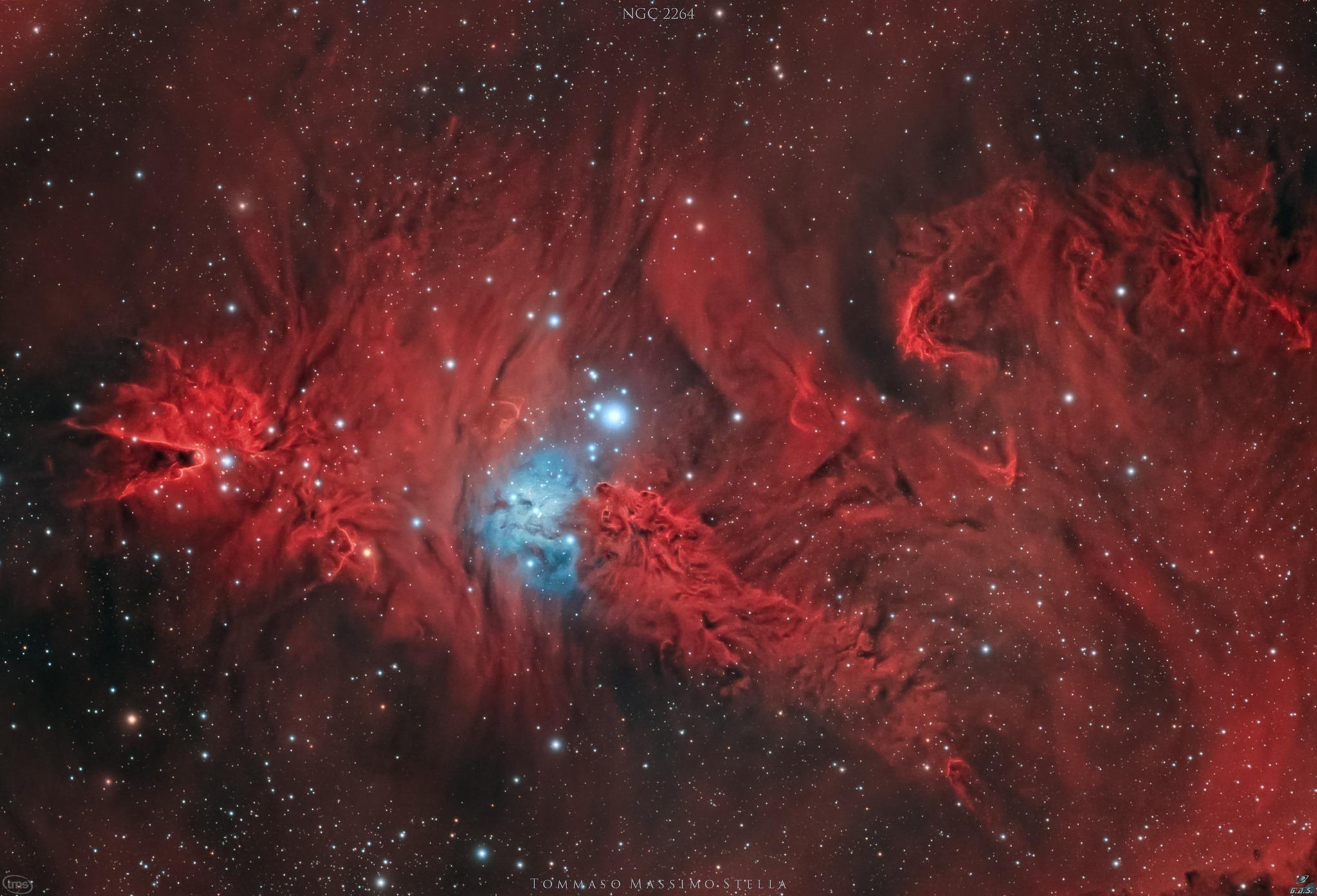
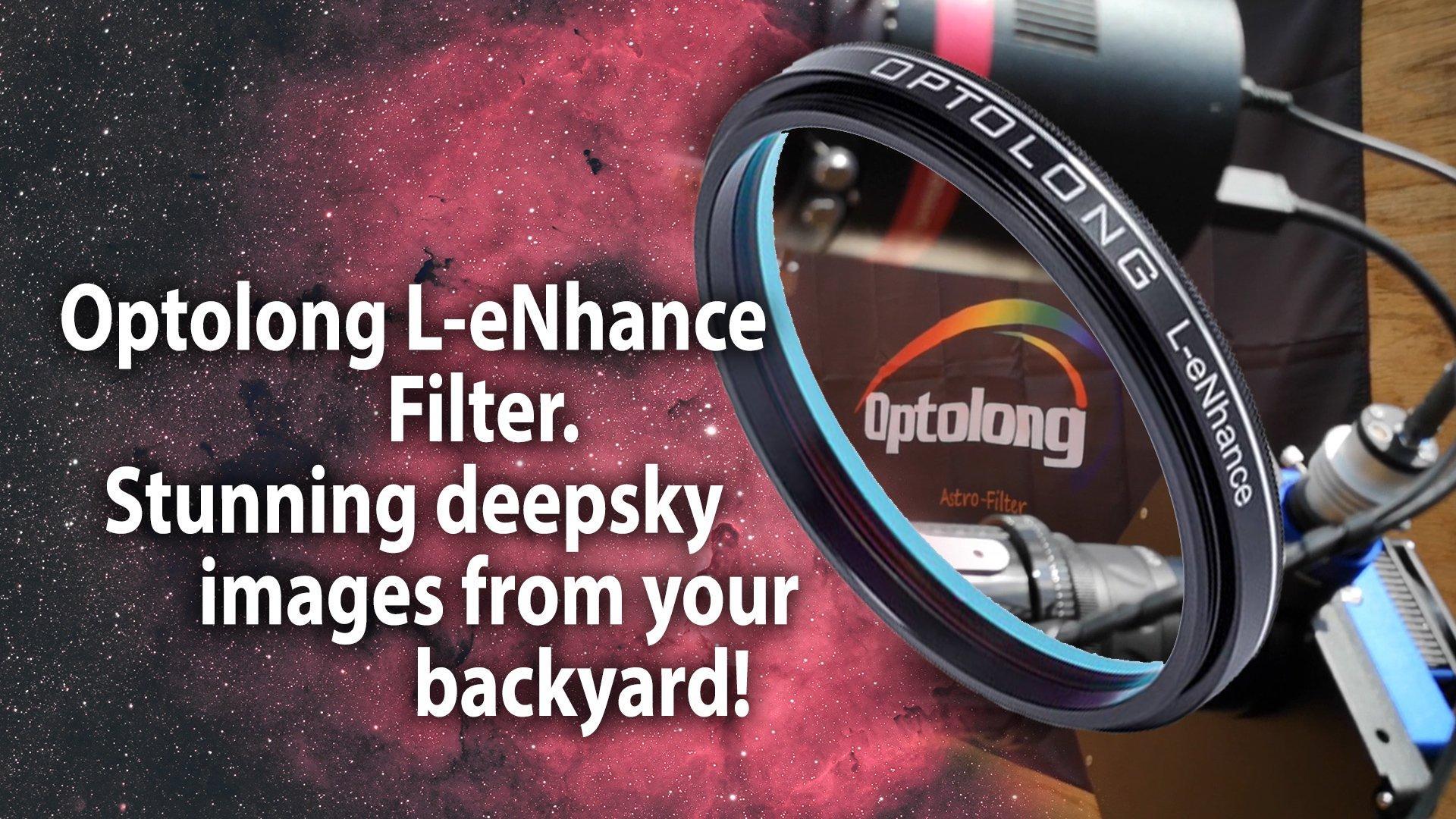
Warm prompt
●About color: due to the influence of ambient light, color difference of the display and flash photography, the color of the product may have some color difference. Detailed color is in accordana with the final product.
●About coating: the interference filter will show different colors under different light, which is a normal phenomenon. Please refer to the material object.
●About the style: in order to improve the product, the change of design/appearance/parameters has not been updated in time. Please see the subject produce.
●About the description: the series of this product have the same material, technology and design, different sizes only, please note.
Optolong L-eNhance features:
★1.25"(1 1/4" mounted), 2" mounted for eyepiece
★SLR Camera clip filters: EOS-C

